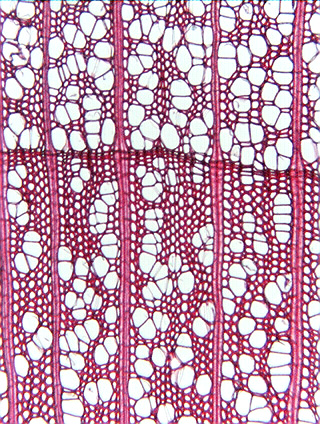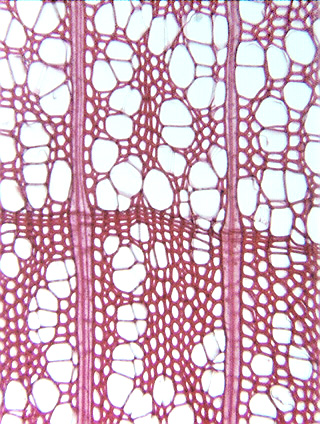 Fig.
15.3-11a and b. Transverse section of magnolia wood (Magnolia
tripetala). In this wood, most
vessels occur in clusters: select several clusters and count the
number of vessels in each. Only count a vessel as being a member of the cluster
if it actually touches another vessel of that cluster; if it is separated from
the vessels of a cluster by a thin layer of fibers (or a layer of axial
parenchyma in those species that have paratracheal parenchyma), then it is not a
member of the cluster. Typically, at least a few vessels occur as solitary
vessels, even in woods where the great majority of vessels are clustered.
Fig.
15.3-11a and b. Transverse section of magnolia wood (Magnolia
tripetala). In this wood, most
vessels occur in clusters: select several clusters and count the
number of vessels in each. Only count a vessel as being a member of the cluster
if it actually touches another vessel of that cluster; if it is separated from
the vessels of a cluster by a thin layer of fibers (or a layer of axial
parenchyma in those species that have paratracheal parenchyma), then it is not a
member of the cluster. Typically, at least a few vessels occur as solitary
vessels, even in woods where the great majority of vessels are clustered.